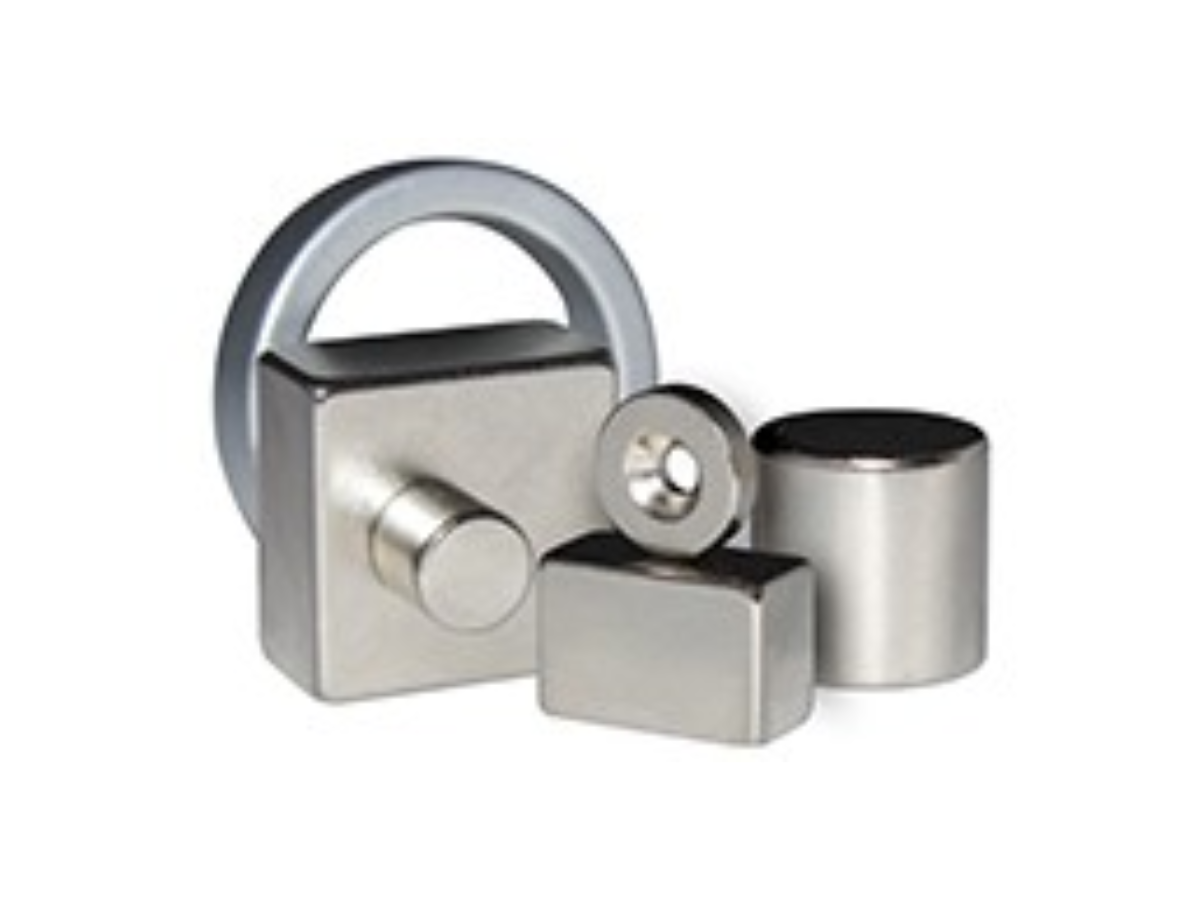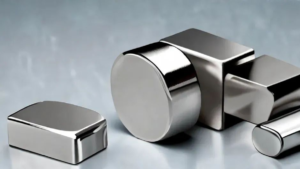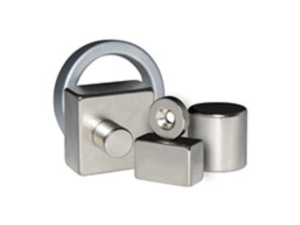

Magnets are a fascinating part of our everyday lives, from the magnets on our fridge doors to the powerful magnets used in advanced technology. There are various types of magnets, but two main categories are rare earth magnets and regular magnets. Let’s dive into understanding the difference between rare earth magnets and regular magnets, their uses, and why one might be chosen over the other.
Rare earth magnets are composed of elements from the rare earth group of the periodic table. These magnets possess incredible strength.
Neodymium Magnets (NdFeB):
Made from alloys of iron, boron, and neodymium, these magnets are commonly used types of rare earth magnets.
Samarium-Cobalt Magnets (SmCo):
Made from the alloy of cobalt and samarium (as the name suggests), they are not that common compared to neodymium magnets. However, they come with specific advantages for certain applications.
Regular magnets, often referred to as ceramic or ferrite magnets, are composed of more common materials. Typically made from iron (III) oxide (Fe2O3) combined with other elements like barium, manganese, nickel, and zinc. These materials are easier to source and manufacture, making regular magnets more widely available and affordable.
Remanence is the measure of the magnet’s ability to retain its magnetism after an external magnetic field is removed.
Rare Earth Magnets:
These magnets exhibit high remanence, meaning they retain a strong magnetic field even after the external magnetizing force is removed. This makes them ideal for applications where a consistent and powerful magnetic field is required.
Regular Magnets:
Regular magnets have low remanence. They do not retain as strong a magnetic field once the external influence is removed, which limits their use in high-performance applications.
Coercivity is the ability of a magnet to withstand an external magnetic field without becoming demagnetized.
Rare Earth Magnets:
They have high coercivity, making them resistant to demagnetization. This property is particularly important in applications where the magnet is exposed to strong external magnetic fields or high temperatures.
Regular Magnets:
Regular magnets have low coercivity, so they can be more easily demagnetized. This makes them less suitable for high-stress environments.
The energy product indicates the density of magnetic energy stored in the magnet. It is a key indicator of a magnet’s strength.
Rare Earth Magnets:
These magnets have a high-energy product, meaning they are very powerful for their size. This makes them ideal for compact applications where strong magnetic fields are needed.
Regular Magnets:
Regular magnets have a low energy product, resulting in a weaker magnetic field for a given size. This limits their use in applications requiring high magnetic performance.
The Curie temperature is the temperature at which a magnet loses its magnetic properties.
Rare Earth Magnets:
Neodymium magnets have a low Curie temperature, meaning they can lose their magnetism at relatively lower temperatures. Samarium-cobalt magnets, however, have a higher Curie temperature compared to neodymium magnets, making them more suitable for high-temperature applications.
Regular Magnets:
Regular magnets have a high Curie temperature, making them more suitable for applications that involve high temperatures. This property makes them useful in various industrial applications where temperature stability is crucial.
The different properties of rare earth magnets and regular magnets make them suitable for a variety of applications.
Rare Earth Magnets:
Due to their strong magnetic properties, neodymium magnets are extensively used in high-performance applications. These include computer hard disk drives (HDD), wind turbine generators, bicycle dynamos, electric motors, and various electronic devices. Their strength allows for smaller and more efficient designs.
These magnets are preferred in applications requiring high-temperature stability and resistance to corrosion. They are used in aerospace, military, and medical applications, as well as in high-temperature environments where other magnets would fail.
Regular Magnets:
Regular magnets are used in a wide range of everyday applications. They are commonly found in DC motors, automotive sensors, separators, and various household items. Their affordability and temperature stability make them suitable for large-scale or less demanding uses where high magnetic strength is not critical.
When comparing high-temperature rare earth magnets vs. regular magnets, it’s important to consider their application environments.
High Temperature Rare Earth Magnets (Samarium-Cobalt):
These magnets can operate at higher temperatures than neodymium magnets and are often used in demanding environments where both high magnetic performance and temperature stability are required. However, they are more expensive due to the cost of materials and manufacturing.
Regular Magnets:
These magnets can also operate at high temperatures and are more cost-effective. While they may not offer the same level of magnetic performance as rare earth magnets, their temperature stability and affordability make them suitable for many industrial and household applications.
Cost is a significant factor when choosing between rare earth magnets and regular magnets.
Generally more expensive due to the rarity of the materials and the complex manufacturing processes involved. Their superior magnetic properties justify the higher cost in applications requiring high performance. For example, the powerful magnetic fields of neodymium magnets make them indispensable in compact electronic devices and advanced technology applications. Similarly, the high-temperature stability of samarium-cobalt magnets is crucial in aerospace and military applications.
More affordable and sufficient for many everyday applications. Their cost-effectiveness makes them ideal for large-scale production and uses where high magnetic strength is not critical. For instance, regular magnets are commonly used in household items, automotive sensors, and DC motors where the magnetic field strength and performance requirements are moderate.
Understanding the difference between rare earth magnets and regular magnets helps in making informed decisions based on specific needs. Rare earth magnets, with their high remanence, coercivity, and energy product, are ideal for high-performance applications but come at a higher cost. Regular magnets, while less powerful, are more affordable and better suited for high-temperature environments. Whether for high-tech electronics or everyday use, choosing the right magnet type is crucial for efficiency and cost-effectiveness.
By understanding the unique properties and advantages of each type of magnet, you can select the most appropriate magnet for their needs, ensuring optimal performance and cost efficiency.

Magnetic sheeting is a flexible material that can be magnetized on one side and often has an adhesive or printable surface on the other. It

Magnets come in various shapes and sizes, each designed for specific uses. Understanding the different shapes of magnets, their properties, and their applications can help

Magnets are a fascinating part of our everyday lives, from the magnets on our fridge doors to the powerful magnets used in advanced technology. There
Our magnet experts will help you get exactly what you need – custom or stock – in record time with great quality at a very competitive price.
Ⓒ 2024 - All Rights Are Reserved